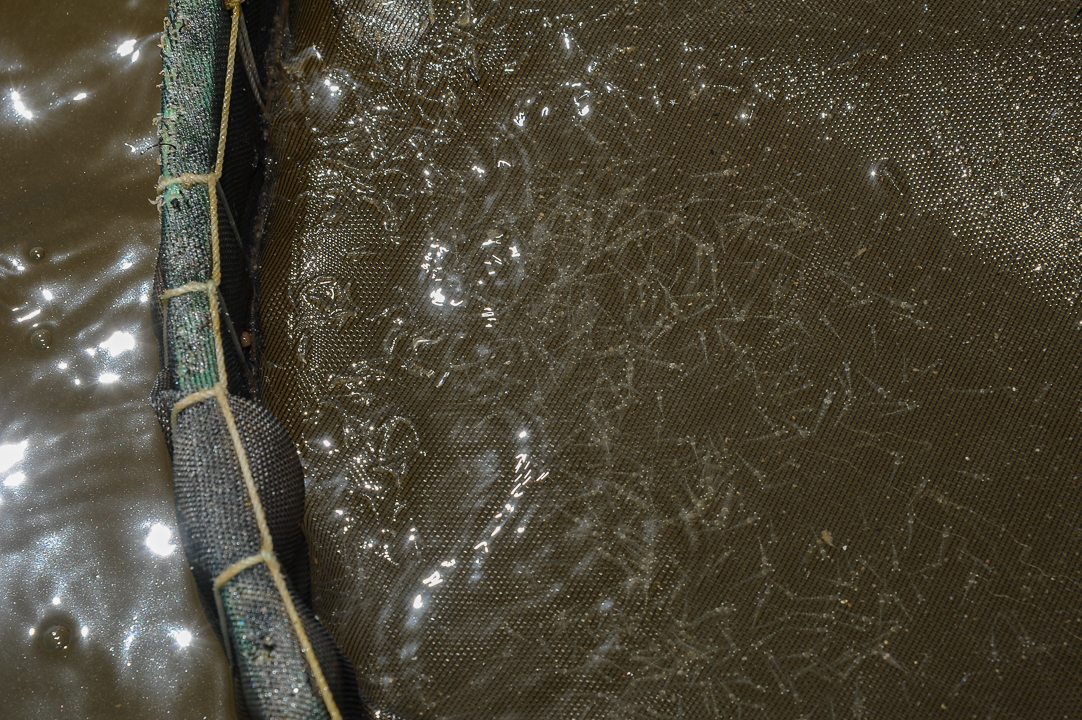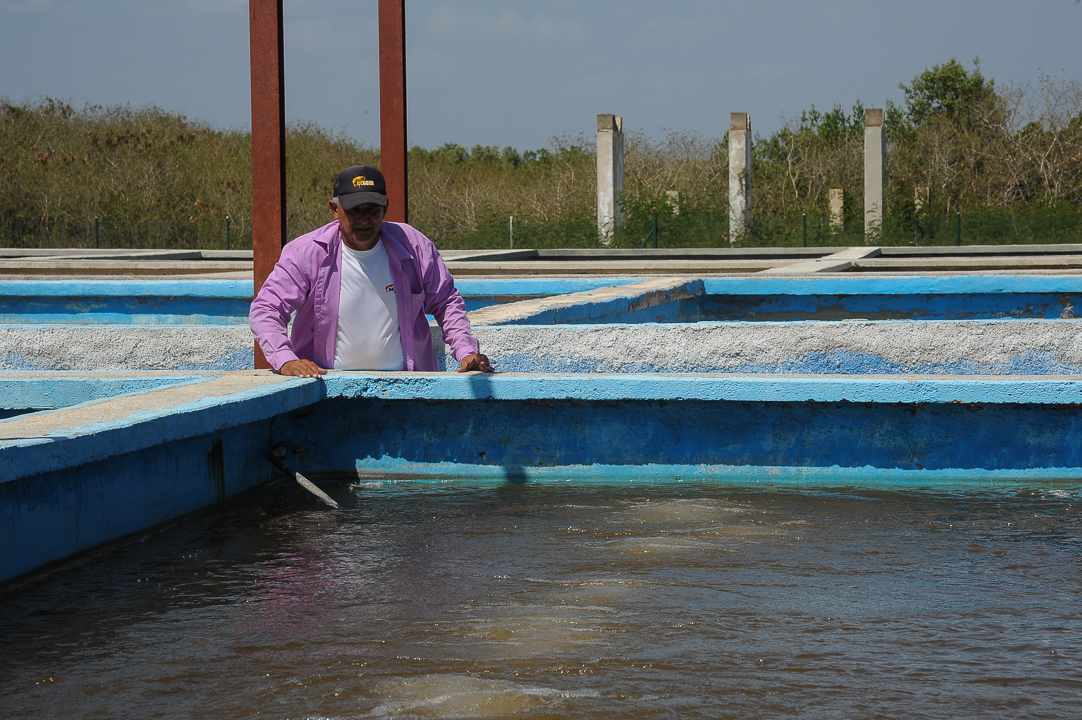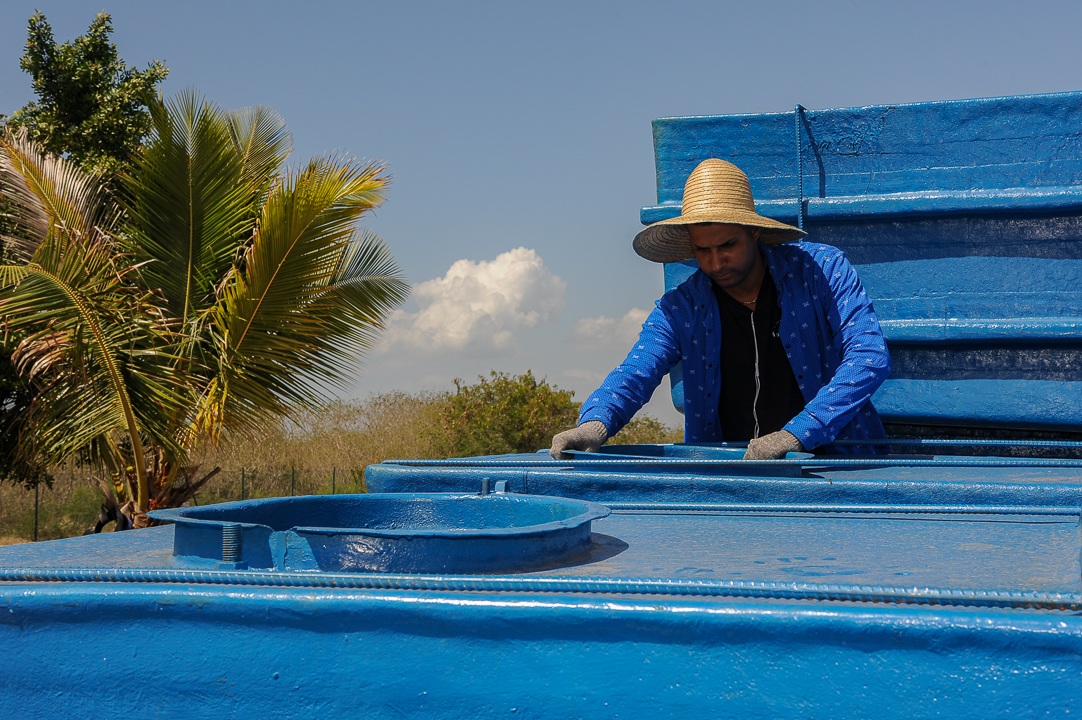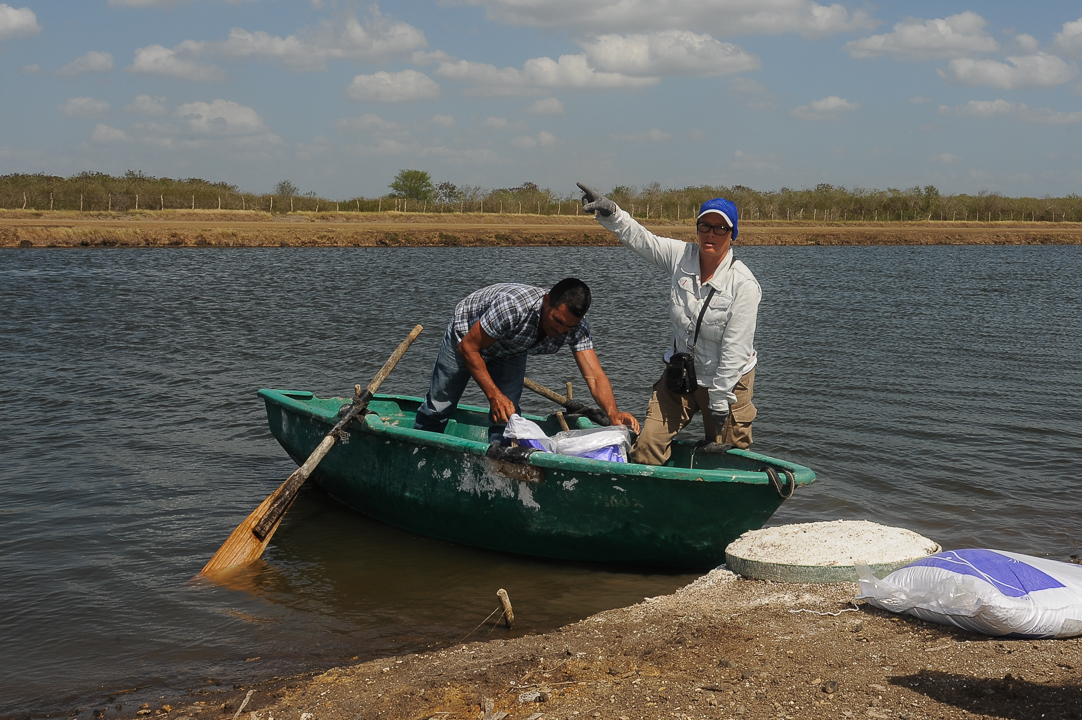CAMAGÜEY. - "You snooze you lose", says a popular saying, but the Camagüey´s shrimp farmers do not give many opportunities to which the crustacean closes the eyes. This is the only way of supporting the results that turn Cultisur into the second company of the country that produces the most, with close to 30 % of the shrimp that is exported from Cuba.
When the larvae of the litopenaeus vannamei or white shrimp, proceeding of the Pacific Ocean, they come to the pre-baby's center the process begins. Two cycles happen there from seven until ten days per month, with a survival of 70 %. Monthly, they are received between 15 and 30 million.
The process, which seems simple and it is not, continues in the productive area composed by seven farms that count with almost 724 hectares-133 ponds - of them in development 698-127 ponds - with an extensive system designed to produce between 1 600 and 2 000 tons a year, especially because the old shrimp farmers say that there the soils turn out to be very good for this activity.
They bet to increase the productions, but without yielding in the quality, which it will be also necessary to increase if they want to diversify markets and to achieve more dividends. For it a wide investment process is carried out that this year overcomes the million in pesos in entire currency and it will allow to raise the production capacity to 2 000 tons of shrimp, in the first moment, of the 3 000 that they take as a long-term goal.

SHRIMP THAT DOES NOT FATTEN...
The repair of roads and ponds will facilitate the 76 hectares conversion to the form of intensive cultivation, dividing equally 10 tons per capita that will allow to increase the volumes for the exportation and the internal market in currency, in addition to the decrease of the costs of production. It is calculated that, of 1 000 tons, 800 at least, have exportable quality.
The pre-baby marks the beginning of the process, the investment projected for this important area includes repairing 16 tanks in desuetude; also, building another 12 and roofing them all. With these conditions it aspires to be obtained post-larvae of more than 100 milligrams and improve the survival over 80 %, since the reception of 30 million post-larvae would guarantee the sowing from 120 to 150 hectares monthly.
As told Reinerio García Almanza, investor of the UEB, they worked hard at 31 hectares of the Farm 7. They work in the regrowth of dikes and of works of factory, as well as in the electrification for the installation of the air systems. “In this February they conclude the first ten hectares, in functioning from March. For the rest of the year we plan to conclude 21 remaining hectares”.
The competition on the market is not easy at all, clarifies Ramón Aguilar Torres, production manager. “Every time there the fertilizers and the food are more expensive, both of import because Cuba has no technology to produce them. Our work needs a coherent management because the shrimp here is about 13 grams, nevertheless, the big producers walk between 20 and 25 grams. The short-term goal proves to overcome the 14 and then to settle in 17 grams”, everything without neglecting the good practices of hygiene and the biosafety requisites in the handling of the shrimp.

QUALITY AND SCIENCE TO WAKE UP THE SHRIMP
Cultisur is endorsed by an integrated system, based on the Cuban and international norms of quality and harmlessness. That's why every three months the processes are evaluated and there are checked indicators that give guarantees before any market as very demanding as it would be. “We demonstrate in specializing laboratories, even one in Canada, that our shrimp fulfills the international parameters since it has neither any residue, nor heavy metals, nor illness, and that one constitutes a strength of our system”, told Odalys Rodríguez Moncada, chief of the group of Quality.
More than 360 workpeople, of them 265 linked directly to the production, work every day conscious of that they are reaching port to the economy of their country. The interested juvenile force for the shrimp breeding has increased, influenced among other causes for the wages-1 869 pesos in 2019 - and the preparation of the University of Camagüey Ignacio Agramonte Loynaz (UC).
Its participation in a place like that has to be a constant, so that it assures suitable quality levels. In this sense the collaboration of the UC has been vital for more than five years, especially that of the faculty of Agricultural Sciences. “We have even research papers ready to implement in the practice. One of them studied how to inoculate the larvae with a vaccine that it makes them more resistant, a project that will spread with the teachers' collaboration of the University of Ghent, in Belgium”, said Niurka Alemán Corso, specialist of training.
Without doubts, the science has been behind the results and has had a lot to do with the growth of the apprehensions of 27.5 % in the last five years with regard to the previous one.

HARD SHRIMP...
The cost to produce and to sell one ton of shrimp is about 16 434 pesos in entire currency, of them 3 353 in currencies. The revenue for ton sold last year was 16 875 pesos in entire currency, 3 481 pesos in currencies. A simple account gives that the utility for sold ton was 411 pesos in entire currency and only 128 in currencies.
Leandro Linares Saavedra, chief of the group of Accounting and Finance of the UEB, told to Adelante Digital that between the reasons by which it was diminished in the utilities the instability was in the price of the international market, “below even of what was planned, neither reached the due weight which affected the fulfillment of the income, one year for which we had planned a 14 grams weight and the real one was in 12.3. If we exceed the plan of the survival in fattening in 9.8 % and that complemented the lost for weight concept”.
The experience reached by the workpeople directly linked to the production facilitates the overachievement of the food conversion factor, which means savings for the company. It is a Cultisur task to improve also the yield for hectare, in 2019 lower that what was planned to do.
In spite of these mishaps, 88.1 % of the shrimp produced in the Santa Cruz´s farms last year had exportable quality. They sold to this market 1 283 tons, 59 % more than in 2015. Nevertheless, these numbers do not please, they are still distant from what the economy of the country needs, of the capacity and the preparation of the labor force of this Camagüey´s entity.

SHRIMP STORIES
Dailí Ramírez Varona works in one of seven farms of Cultisur and practically she was born there, because from her parents she inherited the profession and the tradition and in what way, today she is one of the best of the UEB. “We are concentrated in fulfilling the quality parameters, to raise the number that goes to exportation. It is a task of all, from the simplest worker up to more seasoned of our technical staff”, she said.
The shrimp wins the love; well it is known by Maria Elizabeth Castillo Izquierdo, a Havana woman to whom 20 years ago she was sent to work in Cultisur; she found the love and never again she returned to live to the capital. She remembers that in that epoch her friends told her that she was crazy. Thanks to this "madness" today she has a girl and works along with her husband: "it bears sacrifice, but we make it all together and we organize ourselves to also leave time for the family. I am already, thanks to the shrimp, more from Santa Cruz than from Havana”.
One of the challenges of the shrimp breeding in Santa Cruz is to rejuvenate an aged sector. When it began almost all they were young. Today the strongest task that Neibel Borrero Marín and his base committee have is to increase the number of young people compromised with his work, “when I came here as a guard, today I work as storekeeper. We were only four militants, today we are more than twenty. This job takes very much love and consecration, it is a suitable task for us”.
The country needs currencies and the workpeople of Cultisur knows it very well, they have proposed for 2020 to reach 1 785 tons of shrimp, more 2.7 % of the obtained in the previous calendar. Also, they foresee 80 % of this production with exportable quality, with the requisites of harmlessness hired with the clients, and to increase the weight between 14 and 15 grams. The shrimp of Santa Cruz del Sur does not fall asleep … it refuses to be carried away by the current.
Translated by Linet Acuña Quilez



